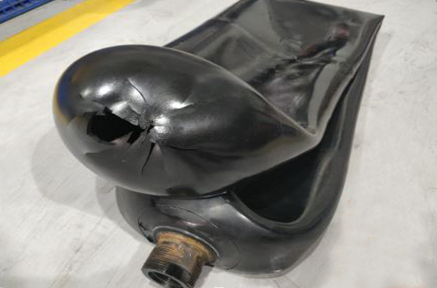-
What's New?
-
Case Studies
- "Can I use 50L bladder on 15G accmulator?"
- Many Users Didn’t Use Accumulator Correctly
- What Is Water Hammer and Solutions?
- Accumulator Service on German Equipment
- Do I need a stainless steel accumulator for the water service?
- Bladder Failure Cause and Prevention
- Why accumulator leaks?
- Accumulator Repair: Hydac or Headache
- Do not confuse the pressure ratings between ASME and CE/PED certificates
-
Technical & Service Guide
- Many Users Didn’t Use Accumulator Correctly
- What Is Water Hammer and Solutions?
- Countries Accepting ASME Code
- Does Bladder Have Pressure Rating?
- Do I need a stainless steel accumulator for the water service?
- Pulsation Dampener Installation & Charging Guide
- Diaphragm Accumulator Charging Instructions
- Accumulator Assembly Instructions
- Bladder Failure Cause and Prevention
- Accumulator Charging Guide
- Bladder Buying & Storage Guide
- Why accumulator leaks?
- Accumulator Repair: Hydac or Headache
- Do not confuse the pressure ratings between ASME and CE/PED certificates
- Show all articles (4) Collapse Articles
Bladder Failure Cause and Prevention

Bladder failure is not very unusual, it needs special attentions.
The major reasons of bladder failure are:
- Poor quality material, or wrong rubber compounds incompatible with the fluid used.
- Bladder lifetime issue.
- Incorrect pressure charging, too high or too low.
- Bladder bursts during installation pre-charging.
Among above major reasons, the first two reasons belong to the materials. We recommend buying only high quality bladders with notice of bladder storage time. (see our technical article Bladder Buying and Storage Guide)
The other two reasons come from the improper use, which is also the cause of most bladder failure cases.
A high percentage of bladder failure or burst happens during the new installation. During the installation, it required that the pressure should be pre-charged extremely slowly, allowing the bladder expand evenly inside the shell, especially for a small size bladder, which can be inflated quickly. Normally, by recommendation, a 5-gallon size bladder will take about 60-80s to be charged to 20psi. Also, the bladder installed in the shell should be folded straight with no twist.
However, we noticed that many users didn’t pay attention to this instruction and did the job in their own way. They twisted the bladder inside the shell and charge the pressure quickly in just a few seconds. This is incorrect and very risky although the accident may not necessarily happen all the time.
A twisted bladder with too quick pressure charge makes the bladder expand unevenly. As a result, some local areas may go into the poppet valve and get blocked. With the pressure increasing, the blocked areas expand and get cut by the poppet valve edge. This will not only cause the bladder burst, but also a serious injury.
For standard auxiliary power source applications, apply the following pressure charging recommendations:
Maximum Charging: 90% of minimum working pressure
Check our accumulator maintenance and service instructions for more details.

